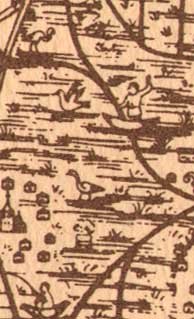| Each of the solar months was literally a feast, each with its own required foods. Prepared in the houses under the watchful eyes of the old women, the ilamaque, food was a language of the cycling of crops as they were planted, sprouted, grew, and were harvested. The most sacred foods of the calendar feasts were the flesh of the ixiptla, the images that gave material witness to the truth of myth and history. Both human and dough images were made, sacrificed, and consumed. In the movement of dough images from the houses to the center and back, the transmission of food between lords and commoners was echoed. The dough image of Huitzilopochtli, prepared in the temple of the calpulli Huitznahuac during the month of Toxcatl, was carried on a litter to the great temple in the center of Tenochtitlan by women. Half a year later, in Panquetzaliztli, this dough image was killed with the weapon of male warfare, a dart, in the center as the ruler watched. The following month, in Atemoztli, dough images of the deities of water and earth, the Tlalocs, were made in the houses of the city. In each calpul, the ritual elders killed the images with the weapon of women, a weaving sword. When mountain images were made again almost at the end of the year, some were carried on litters to Coatepetl. There, they were ritually killed, their hearts removed, their bodies taken to the Tzompantli, the skull rack, where their heads were severed and their bodies dismembered, as the human image of Tezcatlipoca had been in Toxcatl. Their fate recalls the unnamed dough image that was dismembered in the center only three months before. Dressed as a warrior with shield and dart-thrower, this image could be the warrior Huitzilopochtli--or Coyolxauhqui, his sister, who rose in warfare against him, and who he beheaded and dismembered. |
 |
